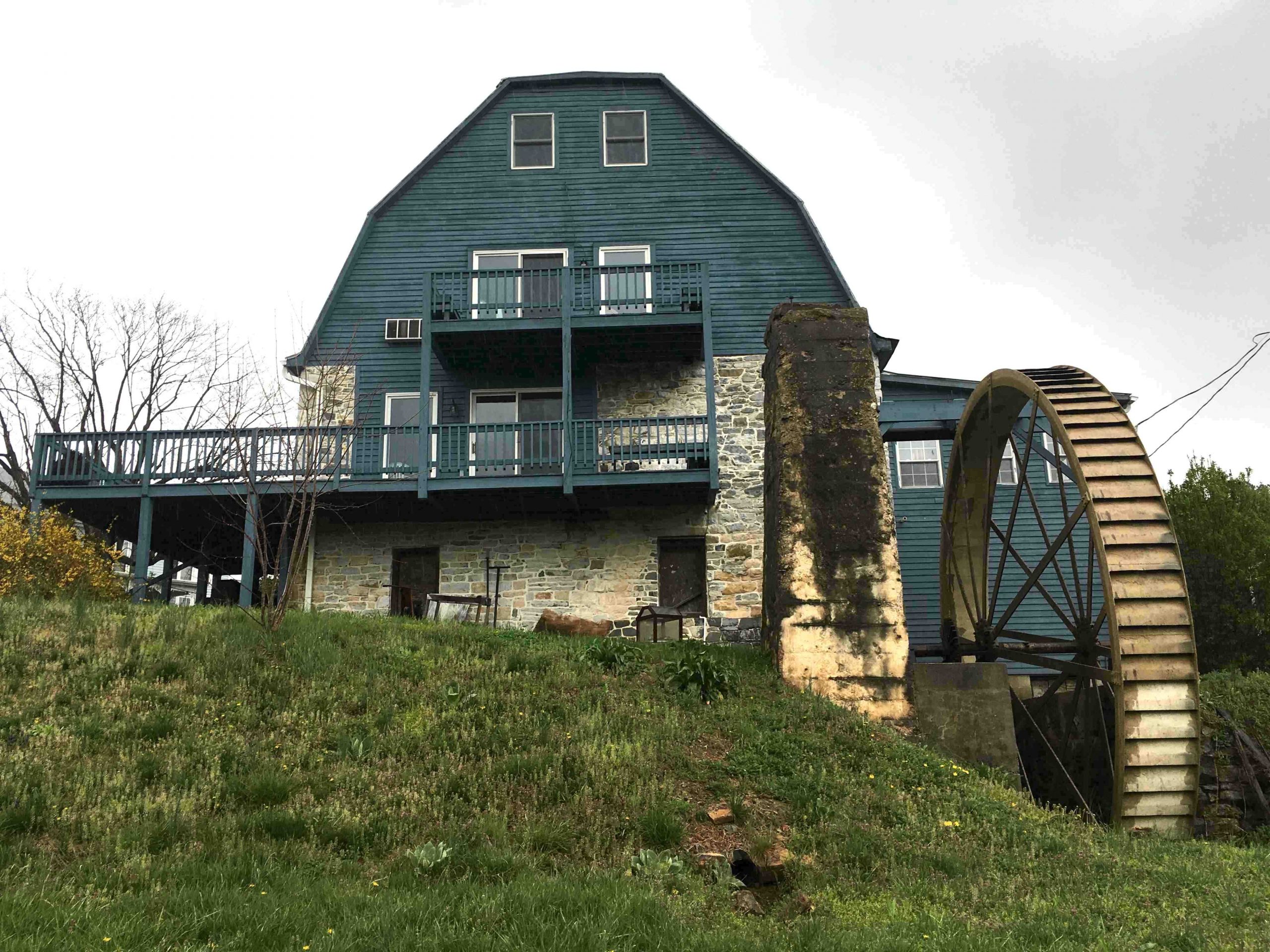
Department of Historic ResourcesAn official website of the Commonwealth of Virginia Here's how you knowAn official websiteHere's how you know

Department of Historic ResourcesAn official website of the Commonwealth of Virginia Here's how you knowAn official websiteHere's how you know


–Targeted tracts are in the counties of Henrico, Rockingham, Shenandoah, Warren, and York, and the city of Chesapeake–
–City of Chesapeake tract preserves land associated with the Revolutionary War; the second time VBPF grants have gone to land associated with battles from that war–
Grants from this year’s Virginia Battlefield Preservation Fund will protect more than 610 acres including acreage associated with the Revolutionary War, in addition to Civil War battlefields and the actions of United States Colored Troops. The General Assembly established the Virginia Battlefield Preservation Fund (VBPF) in 2010, and authorized the Virginia Department of Historic Resources (DHR) to administer the fund by evaluating and disbursing grant awards to eligible recipients. After receiving more grant applications than the 2020 fund of $1 million can support, DHR determined this year’s selection, as it has in the past, through a rigorous evaluation process. Based on DHR’s recommendations, the Commonwealth will award VBPF grants to four organizations: the American Battlefield Trust, the Capital Region Land Conservancy, the Great Bridge Battlefield and Waterways History Foundation, and the Shenandoah Valley Battlefields Foundation. These nonprofits will use the VBPF grants to leverage private matching donations to preserve land tracts associated with six Civil War battlefields — Cedar Creek, Deep Bottom, Fisher’s Hill, Port Republic, Williamsburg, and New Market Heights — and the Revolutionary War’s Battle of Great Bridge. In accordance with VBPF stipulations, organizations that receive battlefield grants must donate an easement to the Virginia Board of Historic Resources on any acreage acquired with the state grants. The easements restrict or forbid development of the acreage, allowing for perpetual protection of the land.
Battlefield Grant Awards 2020
Summaries of Battles (chronological order)
Revolutionary War
Great Bridge Battlefield, City of Chesapeake Preserved Property: Mair Tract (0.7 acre) Sponsor: Great Bridge Battlefield and Waterways History Foundation The Battle of Great Bridge, December 9, 1775, was the first land battle of the American Revolution fought in Virginia. Pitting Virginia militia against British forces, the battle centered on a critical bridge crossing that spanned the Elizabeth River between the present-day cities of Norfolk and Chesapeake on the only road leading south to North Carolina. Royal Governor Lord Dunmore ordered British forces, who had fortified one side of the crossing, to attack and disperse American rebel forces, numbering about 400 men, who occupied the other side of the river. The Virginia militia, under the command of William Woodford, repulsed the British attack, and forced Dunmore and British forces to abandon Norfolk, although the British destroyed the city on January 1, 1776. The Great Bridge Battlefield and Waterways History Foundation purchase of the Mair Tract presents a unique opportunity to preserve land associated with a Revolutionary War battlefield. GBB&WHF’s plans for the property include full public access and pursuit of archaeological research potential at the site.Civil War Battlefields
Williamsburg Battlefield, York Co. Preserved Property: Egger Tract (250 acres) Sponsor: American Battlefield Trust In April 1862, Union Gen. George B. McClellan led the massive Army of the Potomac from Fort Monroe toward Richmond, the Confederate capital. The army advanced west along the “peninsula” between the York and James Rivers, in what became known as the Peninsula Campaign. Gen. Joseph E. Johnston commanded the Confederate army, which on May 3 withdrew toward the capital from his initial line at Yorktown. On May 5, his men filed into prepared defensive works just east of Williamsburg. The pursuing Federals soon attacked and heavy fighting occurred throughout the rainy day, with Confederate counterattacks occurring late in the afternoon. The Federals suffered about 2,300 casualties to the Confederates’ 1,600. During the night, as at Yorktown, Johnston’s men slipped out of the earthworks and continued the march toward Richmond. Preservation of the Egger Tract will preserve land with archaeological research potential, including the site of the former Custis Farm and a possible pre-historic component. The land is unimproved, and, although logged in the past, retains integrity as an historic landscape Port Republic Battlefield, Rockingham Co. Preserved Property: Edwards (Coaling) Tract (107 acres) Sponsor: Shenandoah Valley Battlefields Foundation Fighting at Port Republic on June 9, 1862 involved Confederate attacks against Union troops holding strong positions just north of the Kaylor Farm. The collapse of the Union line gave the Confederate army undisputed control of the upper and middle Shenandoah Valley. Purchase of the Edwards Tract will create a corridor of conserved land that preserves a critical landscape associated with the Battle of Port Republic and the Shenandoah Valley Campaign. It will also open 100 acres not previously accessible to the public and allow for the installation of interpretive signage about the battle. Fisher’s Hill Battlefield, Shenandoah Co. Preserved Property: Erbach (Stoner-Keller) Tract (120 acres) Sponsor: Shenandoah Valley Battlefields Foundation Confederate fortifications across the width of the valley at Fishers Hill prevented the Union army’s use of the Valley Turnpike (roughly U.S. 11 today). A Union attack on September 21, 1864 at Fisher’s Hill and a surprise Union flanking maneuver on September 22 resulted in a Confederate retreat, opening the Shenandoah Valley to Union Gen. Phil Sheridan’s destruction of mills, barns, crops and livestock later that year. The Shenandoah Valley Battlefields Foundation’s purchase of the Erbach Tract will protect a property individually listed on the National Register of Historic Places and significant for its battlefield landscape. It comprises the village of Fisher's Hill and retains much of its integrity as a rural historic mill village. The property will remain in private ownership with a preservation easement placed on it. New Market Heights Battlefield, Henrico Co. Preserved Property: Welch Tract (22 acres) Sponsor: American Battlefield Trust The Battle New Market Heights, September 29, 1864, was part of a series of extended combats at Chaffin’s Farm and Confederate Forts Gregg, Gilmer and Johnson, the Confederate defenses east of Richmond. Lt. Gen. Ulysses S. Grant ordered the assault to create a diversionary attack on Richmond, hoping to deflect Gen. Robert E. Lee's attention from Grant’s movement against the Southside Railroad west of Petersburg during the siege of that city. On the night of September 28-29, Maj. Gen. Benjamin Butler’s Army of the James began an assault on the Richmond defenses. Butler targeted the Confederate line anchored on the north bank of the James River near the Chaffin Farm. Butler's right column under Maj. Gen. David Birney moved the X Corps north from the Deep Bottom bridgehead toward the Confederate works atop New Market Heights manned by Brig. Gen. John Gregg. A brigade of U.S. Colored Troops heroically attacked the heights but was repulsed. Birney reinforced the assault force and stormed the heights again. The battle’s tide turned when Union forces turned the Confederate left flank. The Union success at New Market Heights compelled Gregg to pull Confederate troops back to Forts Gregg, Gilmer and Johnson. The American Battlefield Trust purchase of the Welch Tract supports preservation of a continuous corridor of protected historic landscape associated with the New Market Heights, Deep Bottom I, and Deep Bottom II battlefields. In particular, the property adjoins another preserved tract and both properties are associated with the USCT during the Civil War and present new opportunities for research and education. When complete, rehabilitation of the battlefield landscape and interpretation of the property with trails and signage will have a positive community impact. These efforts also will open lands previously not accessible to the public. Deep Bottom Battlefields, Henrico Co. Preserved Property: Long Bridge Road Tract (39 acres) Sponsor: Capital Region Land Conservancy (CRLC)Programs
DHR has stimulated more than $4.2 billion dollars in private investments related to historic tax credit incentives, revitalizing communities of all sizes throughout Virginia
DHR has secured permanent legal protection for over 700 historic places - including 15,000 acres of battlefield lands
DHR has erected 2,532 highway markers in every county and city across Virginia
DHR has registered more than 3,317 individual resources and 613 historic districts
DHR has engaged over 450 students in 3 highway marker contests
DHR has stimulated more than $4.2 billion dollars in private investments related to historic tax credit incentives, revitalizing communities of all sizes throughout Virginia
DHR has secured permanent legal protection for over 700 historic places - including 15,000 acres of battlefield lands
DHR has erected 2,532 highway markers in every county and city across Virginia
DHR has registered more than 3,317 individual resources and 613 historic districts
DHR has engaged over 450 students in 3 highway marker contests
DHR has stimulated more than $4.2 billion dollars in private investments related to historic tax credit incentives, revitalizing communities of all sizes throughout Virginia